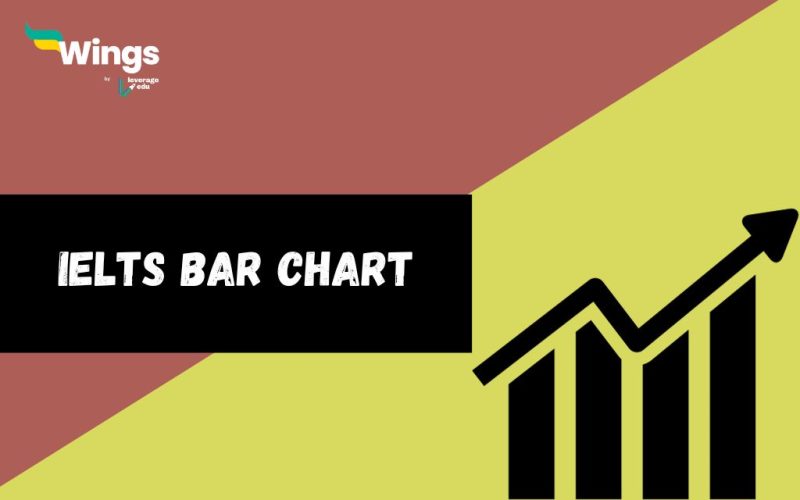The IELTS Academic Writing section includes the dreaded Bar Chart Task which stands out as a formidable test of both language dexterity and critical acumen. This challenge demands more than just deciphering data displayed on colourful bars; it asks students to translate insights into a well-articulated report. In this task, proficiency in English becomes the chisel, expertly shaping observations into clear and concise sentences. Students must grapple with the data, extracting nuances, formulating comparisons, and weaving a compelling narrative based on their assessment. That being said, read the article to delve deeper into the intricacies of the IELTS Bar Chart Task.
This Blog Includes:
How to Describe a Bar Chart in IELTS Writing Task 1? Top 5 Tips to Describe a Bar Chart in IELTS
Writing Task 1 of the IELTS exam requires describing bar charts in the form of well-detailed and articulated reports made based on your analysis of the provided information. Here are some tips to help you describe a bar chart in IELTS writing task 1.
- Keep your introduction clear, concise and to the point. You can paraphrase your topic into a single, comprehensible sentence. Keep in mind to not give too much information in your introduction paragraph.
- Highlight the most salient features of the information given in the bar chart and present them in a comprehensible and coherent manner in the overview section. Go through the data multiple times before meticulously noting down all the important features that arise in your mind. Don’t let any detail remain in the shadows; distil every observation into a clear and concise overview.
- The body paragraphs of your bar chart task should be information-dense and should contain the majority of the information provided. This section carries the maximum weightage, therefore should be well articulated and structured. Ensure to write at least two body paragraphs to bolster your chances of scoring higher in the bar chart task.
- Carefully divide and condense the information, ensuring each paragraph tackles a unique aspect of the pie chart.
- Use as many linkers and connectors as possible. Doing so will help you write coherent, comprehensible and articulated sentences. It can help you translate the given information better into your writing.
Most Commonly Asked Bar Chart Questions in IELTS Writing
Conquering IELTS Bar Chart questions may seem like scaling a mountain. Not only do they require impeccable English, but also keen analytical and critical thinking skills. These notorious writing prompts have long haunted students, but familiarity with previous year’s questions and commonly asked questions can be your secret weapon for a triumphant performance. Examining frequent IELTS Bar Chart questions arms you with insights into potential questions, their structure, and hidden intricacies. Here are some of the most common IELTS Bar chart questions.
- Write a 150-word report after going through the chart given below. The chart below gives some of the most reported issues among people living in UK cities in 2008 (%).
- Write a 150-word report after going through the chart given below. The chart below shows the proportion of male and female students studying six art-related subjects at a UK university in 2011.
- Write a 150-word report after going through the chart given below. The chart below shows the percentage of male and female executives in six different types of professions across the UK in 2007.
IELTS Writing Bar Chart Task Sample Essay
Going through the bar chart sample essay will help you navigate to better describe a bar chart in the IELTS writing task 1. Here is a bar chart example (along with the sample answer) for your reference.
- Write a 150-word report after going through the chart given below. The chart below shows the expenditure of the two countries on consumer goods in 2010.
Digging into a comparison of UK and French consumer habits in 2010 through the lens of a bar chart reveals some insightful contrasts and surprising similarities.
While the British outspent their French counterparts overall, both nations shared a love for automobiles, with cars topping the spending charts. Perfumes and cameras, on the other hand, languished at the bottom of the shopping list in both countries.
Interestingly, when it came to other categories, France took the lead. They lavished more on various goods, spending, for example, substantially more on computers than the UK. However, a noteworthy exception was perfumed, where neither nation exhibited much enthusiasm.
Despite this spending gap, both the UK and France showcased a shared value for computers, allocating comparable budgets for this tech essential. This hints at a convergence in certain technology priorities despite differing overall spending behaviours.
In conclusion, this bar chart of consumer habits in 2010 unveils a fascinating portrait of contrasting priorities and shared interests across the countries. While the UK reigns supreme in overall spending, France exhibits a more balanced approach, highlighting the complex tapestry of cultural influences and economic factors that shape consumer choices.
So, that was all about the IELTS Bar Chart. Hope the blog could’ve addressed all your queries regarding the topic.

FAQs
Ans. You can describe an IELTS bar chart by analysing the given information, discerning the salient features of the data, writing a crisp and solid introduction, a to-the-point overview section and detailed body paragraphs.
Ans. The bar chart task can be segregated into different segments, such as the introduction, body paragraphs, overview and conclusion.
Ans. The scoring range of IELTS writing is 0-9.
Related Reads:
Visit the Leverage Live page of Leverage edu or contact our study abroad experts at 1800-57-2000 to strengthen your scores and application to secure your spot in your dream college.
 One app for all your study abroad needs
One app for all your study abroad needs















 60,000+ students trusted us with their dreams. Take the first step today!
60,000+ students trusted us with their dreams. Take the first step today!